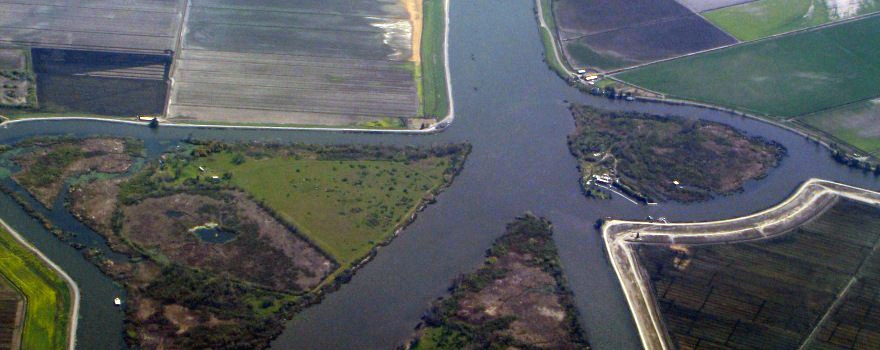 Build one tunnel now, second in the future
Build one tunnel now, second in the future
From the Department of Water Resources, this letter addressed to public water agencies participating in California Water Fix:
As you know, California WaterFix marked several key milestones in 2017 and the state continues to work to advance the project through the remaining steps needed to begin construction.
Public water agencies that receive water supplies through contracts with the state have expressed their support for WaterFix. In a series of public meetings last fall, twelve of these agencies voted to advance WaterFix because they understand that California’s primary supply of clean water for 25 million people and 3 million acres of farmland is increasingly unreliable. They include Santa Clara Valley Water District, Kern County Water Agency, Zone 7 Water Agency, Metropolitan Water District of Southern California, Alameda County Water District, Castaic Lake Water Agency, Coachella Valley Water District, Crestline-Lake Arrowhead Water Agency, San Bernardino Valley Municipal Water District, Desert Water Agency, San Gorgonio Pass Water Agency and Mojave Water Agency. The state needs a real solution that provides reliable, clean and safe water to California businesses, farms and residents. WaterFix is a critical element of the state’s overall strategy to address climate change and ensure a reliable water supply for the future, as outlined in Governor Brown’s California Water Action Plan.
As the Department of Water Resources (DWR) has previously stated, the scope of WaterFix ultimately hinges on our partnership with local water agencies and their support for the project. With the support of the public water agencies that contract with the state for their supplies, DWR is proposing to pursue WaterFix as planned, but also take actions that would allow construction to be implemented in stages. Being prepared to implement this option is directly responsive to the stated needs of the participating agencies, and would align project implementation with current funding commitments. It would also allow us to take significant steps toward improving environmental conditions.
Under this approach, DWR proposes to first focus on elements of WaterFix that are consistent with the support expressed by public water agencies. The option for a first stage includes two intakes with a total capacity of 6,000 cubic-feet per second (cfs), one tunnel, one intermediate forebay, and one pumping station.
The second stage would consist of a third intake with 3,000 cfs capacity, a second tunnel, and a second pumping station, which will bring the total project capacity from 6,000 cfs in the first phase to 9,000 cfs capacity in total. If funding for all elements of the currently-proposed WaterFix is not available when construction begins, stage two would begin once additional funding commitments are made from supporting water agencies.
Being prepared and having the option of a staged implementation of WaterFix is prudent, fiscally responsible and meets the needs of the public water agencies funding the project. It would allow work to begin on WaterFix, as soon as all necessary environmental review and permits are complete, which is anticipated near the end of 2018.
The overall cost of WaterFix has not changed, at $16.3 billion in 2017 dollars (equivalent to $14.9 billion in 2014 dollars). However, the cost of the option of proceeding with the first stage is $10.7 billion.
The state is preparing a cost-benefit analysis that will be available soon to provide further information about the economic benefit of protecting a critical source of reliable water supplies for the state and safeguarding decades of public investment in the State Water Project.
Participating public water agencies are expected to bring actions to their respective boards this spring to finalize the necessary agreements and stand up the finance and construction Joint Powers Authorities.
In addition, DWR will fully evaluate the potential environmental impacts of the staged implementation option and expects to issue a draft supplemental Environmental Impact Report in June of 2018, with a final in October 2018. The additional information developed for CEQA will also be used to supplement the Endangered Species Act, Section 7 and California Endangered Species Act, Section 2081 record. DWR does not expect substantial change to the Biological Opinions or Section 2081 Incidental Take Permit issued in 2017. Preliminary modeling indicates that there are no new water quality or aquatic issues related to staging the implementation. DWR expects no changes in impact determinations and no changes to mitigation. Thus, DWR will be able to immediately implement this option, in addition to the project already analyzed under CEQA.
Having worked hard to fix a significant infrastructure and environmental problem, DWR is eager to move forward with you to protect the Delta and our water supplies.
Karla A. Nemeth
Director, Department of Water Resources
DWR’s official statement
Today, the Department of Water Resources (DWR) sent a memo to the local public water agencies participating in the development and construction of California WaterFix and issued the following statement from DWR Director Karla Nemeth.
“WaterFix is a long-overdue infrastructure upgrade that will maintain a reliable water supply for 25 million Californians while also protecting the Delta ecosystem. With the current stated support of the participating public water agencies, the state is proposing to pursue WaterFix as planned, but also explore an option to implement construction in stages. This prudent approach aligns the urgent statewide need for action with the project’s current support. We are eager to move forward with WaterFix to protect the Delta and water supplies.”
——————————————–
Sign up for daily email service and you’ll always be one of the first to know!
- Sign up for daily emails and get all the Notebook’s aggregated and original water news content delivered to your email box by 9AM. Breaking news alerts like this one, too. Sign me up!
 Maven’s Notebook
Maven’s Notebook
constantly watching over the world of California water


